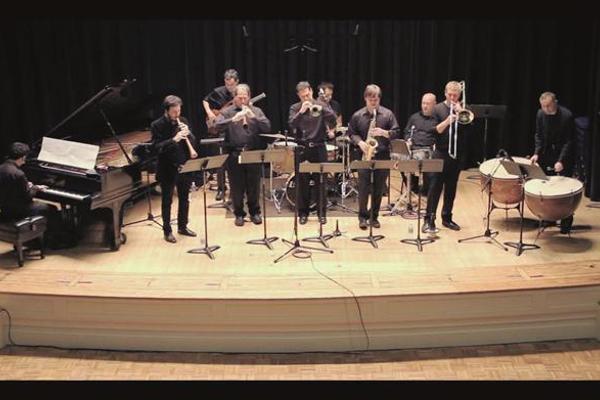Roots of Turkish music meet jazz
ISTANBUL Yonca MORALI


Sanlıkol integrating Turkish modalities into the soul of jazz.
On the evening of March 6, Istanbul was stage to an extraordinary musical event in one of the city’s most interesting venues. To see it, one had to cross the colossal iron door of Istanbul Technical University’s Foreign Languages School in Maçka, a building that used to be the arsenal of theOttoman Empire in the 19th century.
On the lower floor of the building, the Mustafa Kemal Concert Hall was packed with music enthusiasts and conservatory students, waiting for an important musical experience that had not been publicized, and had been sponsored by the university board.
The performance was delivered by the Sanlıkol Group. Mehmet Ali Sanlıkol is a Turkish jazz pianist and composer who headed to the United States in 1993 to earn a degree from Boston’s prominent Berklee College of Music. However, his career had already started at the age of 5, taught in-house by his mother, a classical pianist. Thus, after spending his childhood playing classical music, Sanlıkol began a prestigious career in jazz, and produced albums with his electric jazz band AudioFact.
Sanlıkol founds 'the world'
However, while continuing his higher education in the U.S., in the year 2000, an unexpected coincidence opened him up to the doors of a whole new world. The magic of the “makam,” the Middle Eastern “musical modality,” dragged him into a journey of research through 1,000 years of cultural interactions in Anatolia. He founded “Dünya” (literally world), a musicians’ collective and a record label which serves as a platform of exchange and experimentation based on the music of the “formerly Ottoman peoples – Greeks, Jews, Armenians, Arabs, Kurds and mystics,” aimed at “engaging contemporary audiences.”
As a result, he produced a series of highly intellectual collaborations which explored a range of traditions from Ottoman court music, to the mystical depths of Turkish humor embodied in the folkloric tales of Nasrettin Hoca and Keloğlan and the shadow puppet theater of Karagöz. Bringing out the essence of the matter and making it understandable to today’s public; isn’t this what the development of cultural heritage should be all about? And isn’t this what cultural identity should be based on, rather than the replication of forms devoid of content? This is exactly what Sanlıkol and his team of interdisciplinary experts have succeeded in delivering within this unique platform.
An accomplished scholar, teacher and performer, Sanlıkol’s rediscovery of his own roots gave him the tools to build the bridge between east and west, and between the past and present. So here we are inside the İTÜ Concert Hall, with a group of nine American and Turkish musicians, playing more than 15 instruments ranging from the classical piano and the saxophone, to traditional Turkish instruments such as the “ney,” “zurna,” and the “def.” The repertoire includes compositions by Sanlıkol, two of which are influenced by the Sufi music of the Mevlevi brotherhood, whose spiritual founder was Rumi.
A unique poem from the 17th century as recorded by court musician Ali Ufkî rediscovered and set to music by Sanlıkol is also on the list. The whole experience is elevated to another dimension thanks to Sanlikol’s impressive vocal performance. Maybe even he had never dreamed he would one day master the singing of Ottoman classical songs. The special guest for the occasion was Erkan Oğur, Turkey’s world renowned guitarist who also mastered many string instruments from the Anatolian folkloric traditions.
Like his younger fellow, he is a master of both worlds, integrating Turkish modalities into the soul of jazz and improvising a jazz solo on his fretless electric guitar while playing a 100 year old folk tune.
The search for the synthesis between traditional Turkish music and western genres is not a new one. The end of the 1960’s had witnessed the proliferation of unique styles such as Anatolian Rock, and what had wrongly been referred to as Arabesque. The father of this last genre is Orhan Gencebay, a great musician who started with traditional folk music and developed a highly sophisticated fusion with soul music. Thus, it shouldn’t be that big of a surprise to hear Sanlıkol singing one of Gencebay’s most popular songs, (“Felekten Beter Vurdu”). Sanlıkol knows the history of his own journey and as a “contemporary musician who is able to speak and write more than only one language,” he is open to experience music as a whole living entity that has no boundaries.
